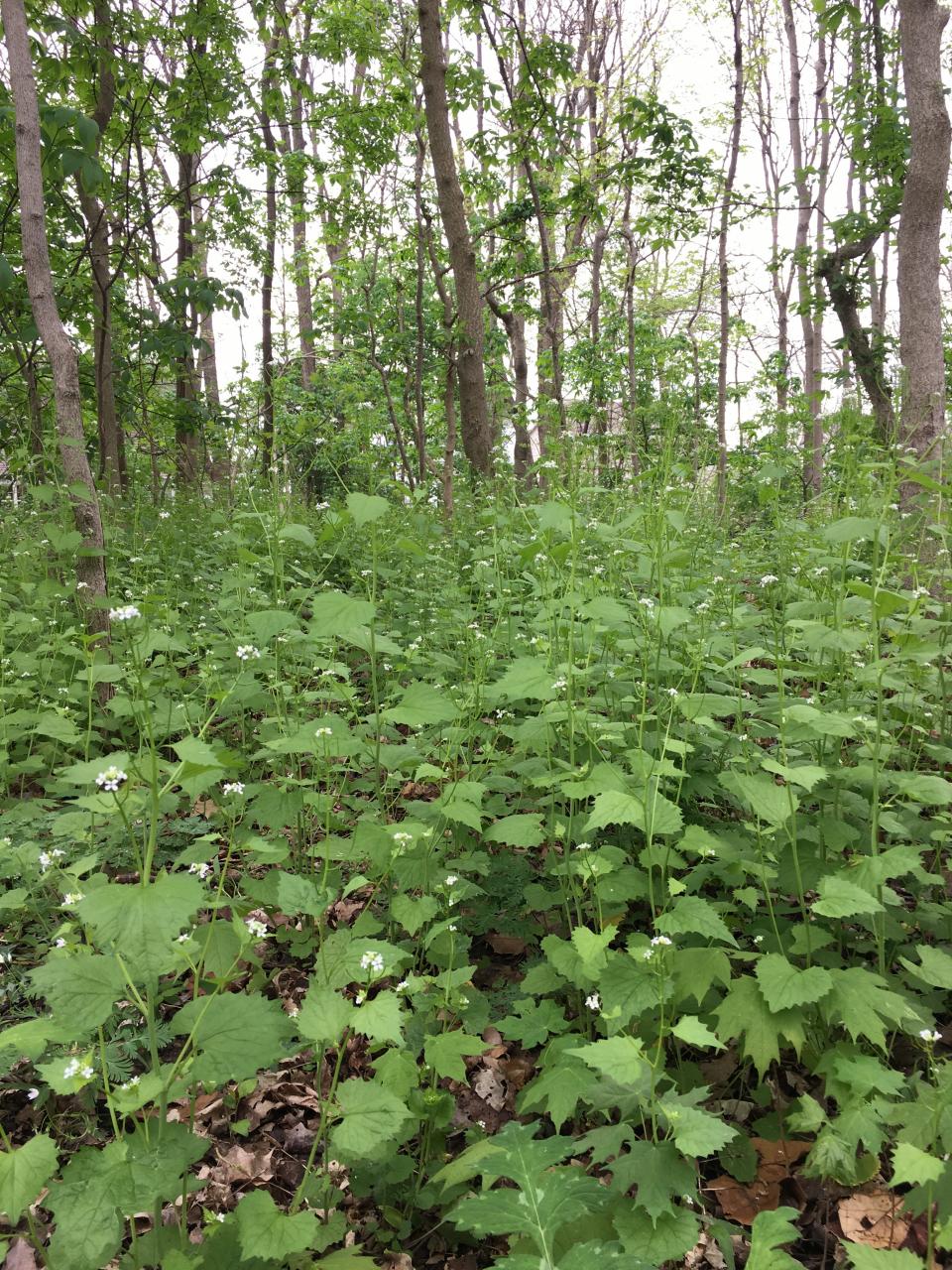Indiana invasive: Garlic mustard is a pervasive pest. Here's how to get rid of it
Wild daffodils are blooming, and buds are greening on trees, but Indiana’s forests and meadows are also seeing an invasion this spring.
Garlic mustard is one of the first plants to appear in the spring and has earned top rank as one of the states worst invasive plants by the Indiana Invasive Species Council.
The plant gets its name from the scent of garlic coming from its kidney-shaped leaves and other foliage. The weed typically grows to about 3 feet tall, but some can reach up to 6 feet.
Garlic mustard can quickly spread and devastate native ecosystems, so here are some tips on how to identify the plant and get rid of it.
How can you identify garlic mustard?
Seedlings pop up in February and March. The leaves are dark green with a rough scalloped shape and the plant has four-petaled white flowers.
Seeds develop in pods that can reach up to 6 inches long. A single plant can have hundreds of pods.

Where is garlic mustard found?
Garlic mustard grows in shady and moist conditions but can also survive in sunlight.
The plants have been found in Indiana's forested wetlands, fens, savannas and forests as well as long roadsides and in old crop fields. Garlic mustard can be found where there has been some disturbance such as near trails or railroads.
Why is garlic mustard bad?
The plant can displace native species in forest communities by spreading very quickly. A single plant can produce up to 15,000 seeds that remain viable for five years. Letting a few garlic mustard plants survive can create an invasion in just a few years.
The plant can inhibit the growth of other plants and choke out sunlight for native species.
Weed Wrangles: What to know about removing Indiana invasive plants
Garlic mustard sprouts and grows early in the year, meaning native plants are already outcompeted when they sprout.
Climate change is only making this worse since it alters seasons faster than native plants can adapt.
How do you get rid of garlic mustard?
Destroying a garlic mustard patch can take quite a while. The goal is to stop seeds from developing and since seeds can still grow after five years, staying on top of new growth is important.
The Nature Conservancy recommends the following process:
Pull garlic mustard plants before seeds appear
Remove the crown and roots
The best time to start pulling is after it rains so it’s easier to pull the tap root
Bag the pulled plants and throw them out with the trash
Don’t compost the plants
When did garlic mustard come to the U.S.?
Garlic mustard was first introduced into the U.S. in 1868 in Long Island, New York, from Northern Europe and Asia.
It was brought to the U.S. for erosional control as well as its herbal qualities.
Since establishment, it has been called poor man’s mustard, hedge garlic, garlic root and Jack-by-the-hedge.
Karl Schneider is an IndyStar environment reporter. You can reach him at karl.schneider@indystar.com. Follow him on Twitter @karlstartswithk
IndyStar's environmental reporting project is made possible through the generous support of the nonprofit Nina Mason Pulliam Charitable Trust.
This article originally appeared on Indianapolis Star: Indiana invasive: Garlic mustard can outcompete native plants

